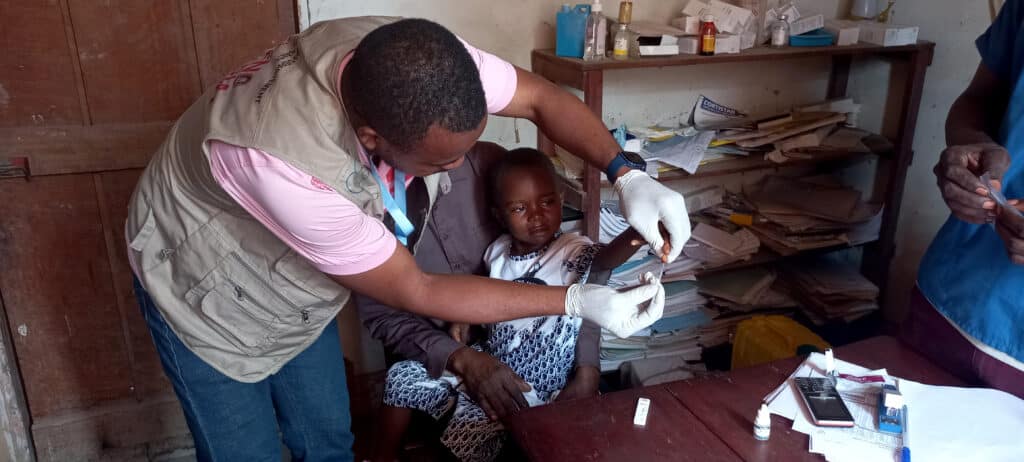A reflection on the bicentennial of Methodist mission
By Thomas Kemper
April 3, 2019 | Atlanta, Ga.
How does the current work of the United Methodist General Board of Global Ministries compare to the objectives of our oldest predecessor, the Methodist Episcopal Missionary Society, established in 1819? I have reflected on this question as we celebrate our mission bicentennial and I am fascinated by the continuities I see.
Nathan Bangs, the first executive of the missionary society and a historian of early American Methodism, cites six motivations for starting the organization. Two concerned financial considerations and one is sociological—keeping up with what other denominations were doing. The other three, focusing on mission outreach, are the ones I find most interesting. These are: 1) reaching people on the remote western frontier of the young United States; 2) ministry with Native Americans; and 3) extension of mission “to more distant fields” [abroad].1 In short, the Missionary Society was intended to enlarge the reach of the gospel to persons and groups not already or well-served by the church, to offer them Christ and accompany them on their faith journeys. This mission outreach is what we still do.

Ministry with indigenous peoples
I am a little amazed that a self-conscious motive for the society’s founding was the possibility of including Native Americans in the Methodist family. This came about primarily through the ministry of a lay pastor named John Stewart, of mixed African-American and white heritage. He preached among the Wyandot people in Ohio beginning around 1815 with the support of the then Ohio Annual Conference and the benevolence of Bishop William McKendree, the third U.S. episcopal leader after Thomas Coke and Francis Asbury. Stories of the work of Stewart enlivened enthusiasm for a missionary society back East.
While Methodists may not have an altogether continuous, or admirable, history of relations with indigenous peoples, such ministry is in our DNA and has been pulled to the forefront in recent years by the UMC Act of Repentance Movement. We must never again let it fall by the wayside.
In the early 1830s, the Missionary Society wet its sights on “distant fields” abroad, first Liberia, Brazil, and then Argentina. This has grown remarkably over the decades, so that today we have missionaries in some 60 countries and mission personnel, projects, and partners in a total of more than 125 countries. And we keep adding new locales. Recent mission initiatives have introduced Methodism to 15 places where it did not formerly exist, and since 2009, these initiatives have started more than 1,000 new worshipping communities.

Ministry with Immigrants
The initial mission society operational plan provided circuit-riding missionary-pastors on the frontier. Bishops serving mission districts called upon the society for funds for such clergy. Immigrants counted in this expansion and our denomination’s contemporary concern for migrants emerges from our mission roots.
The several missionary societies that would emerge in our American Methodist and Evangelical United Brethren history were acutely aware of the influx of immigrants in the mid-to-late 19th century. The M.E. Church Missionary Society organized specific mission outreach to ethnic or nationality groups—such as Norwegians, Germans, Swedes and Italians—who had their own cultures but were on the fringes of life in the New World on arrival.
Ministry with 19th century immigrants by our EUB mission ancestors has personal meaning for me. Immigrants from Germany who settled in the United States joined a predecessor movement that became part of our Evangelical United Brethren (EUB) heritage. Some of these new Wesleyans returned as missionaries to Germany, where they formed the community out of which my family would eventually become United Methodist. So, I have a keen appreciation for the ministry with migrants and those on the edges, giving substance to the realization that migration can be a blessing.
Also, as early as 1850, German Methodists in Bremerhaven, the port city of Bremen, started an Auswanderer Kirche, or “Emigration Church,” to prepare people leaving Germany to link up with Methodists (rather than Lutherans or Catholics) in the new land. They distributed a 24-page pamphlet, “friendly hints (advice) for emigrants,” and they “have done much more than us,” wrote one Lutheran critic at the time.
Ministry with impoverished communities
Christian mission is always at its best when it focuses on those ignored or pushed aside by dominant cultural norms and economic force. We learn this from Jesus and John Wesley, and my own experience as a missionary in Brazil bears it out. I went to Brazil in 1986, where I worked for eight years teaching in a theological seminary. The interaction with students was deeply meaningful and valuable to my growth as a Christian. But the most gripping part of my experience was through an ecumenical ministry with people who were homeless, many living under the freeways of São Paulo.
The street ministry focused on food and worship. Weekly, people living on the streets and our group of volunteers contributed to a common soup pot—vegetables about to be discarded by vendors or bits of fish from shop owners. Everyone contributed to “The Soup” and shared the savory results. Everyone was equal around the common dish. After eating, we sang hymns, praised God, and prayed together. Sometimes we joined marches and protests seeking justice. It was powerful mission.
Two hundred years ago, April 5, 1819, a group of Methodists met at the Forsyth Street Church in New York City to organize a missionary society. They did so, issuing an “address,” very much in the language of its day but with a breadth of vision worth recalling:
[…] Our views are not restricted to our own nation or colour; we hope the aborigines of our country, the Spaniards of South America, the French of Louisiana and Canada, and every other people who are destitute of the invaluable blessings of the Gospel, as far as our means may admit, will be comprehended in the field of the labours of our zealous missionaries.2
Amen.
Thomas G. Kemper is the general secretary of the General Board of Global Ministries.
NOTES
1 History of the Methodist Episcopal Church, III, pp 80ff, and cited by Wade C. Barclay, Early American Methodism 1769-1844, Vol. 1: Missionary Motivation and Expansion. Board of Mission and Church Extension of The Methodist Church, New York, 1949, p. 206.
2 Barclay, op.cit, p. 208.




